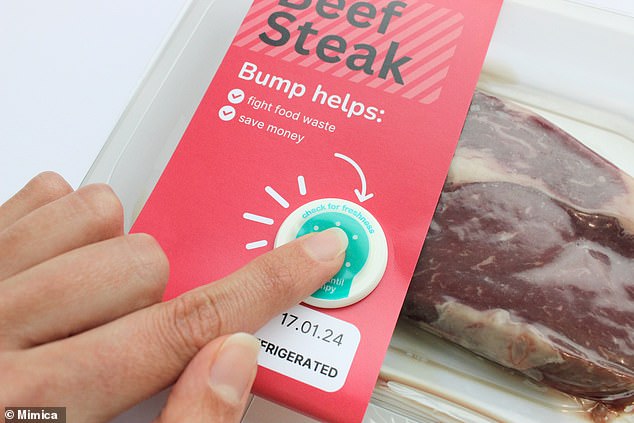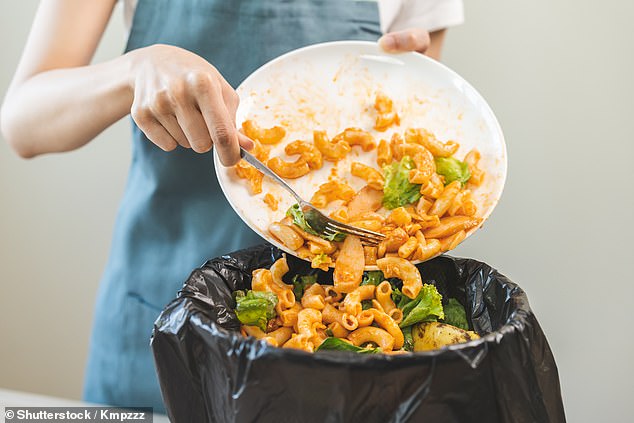Forget ‘best before’ labels! Temperature-sensitive ‘Bump Tag’ shows in real time if your food is safe to eat – and could reduce food waste by 63%
We’ve all been there: you want to make a cup of tea and discover that the milk is already past its sell-by date.
But the days of having to choose a cup of tea without milk may soon be a thing of the past, thanks to a new food label.
Scientists have developed a temperature-sensitive label that allows you to immediately see whether your food is safe to eat.
The tag, also called a “Bump Tag,” sits smoothly on your food when it’s still good to eat, while creating pointy bumps when the food ends up in the trash.
The researchers hope the tag can help tackle the growing problem of food waste in the UK.
Researchers from the University of Reading have collaborated with Mimica to create a temperature-sensitive label that shows in real-time whether your food is safe to eat
Food waste is a major problem in the UK, with figures showing that a staggering 9.5 million tonnes of food is produced each year.
The vast majority of this waste ends up in landfills, where methane gas is released, a gas that contributes greatly to global warming.
In the hope of tackling this growing problem, researchers from the University of Reading have partnered with London-based start-up Mimica.
Mimica’s Bump Tag is a temperature-sensitive, tactile label that provides real-time information about food freshness.
The label is intended for use on beverages, dairy products, meat or fish and contains a vegetable gel.

Mimica’s Bump Tag is a temperature-sensitive, tactile label that provides real-time information about food freshness

If the tests prove successful, researchers believe the stickers have the potential to reduce food waste at home by 63 percent and retail waste by 50 percent (stock image)
This gel breaks down at the same rate as food spoils and responds to temperature changes.
Early in its life, the gel is liquid, meaning the label feels firm and smooth under the finger.
But through At the end of its life – and when the food is no longer safe to eat – the gel solidifies, exposing the bumps underneath.
“Bump helps print longer shelf life dates by taking into account realistic storage conditions, rather than the worst-case scenarios used by the current shelf life system,” explains Solveiga Pakštaitė, founder and CEO of Mimica.
‘We already know it offers significant economic and sustainability benefits for producers, but consumer support is essential to its success.
‘With this project, we will not only apply our food waste reduction technology in the meat and fish industry, but also measure the extent to which the technology helps people make more sustainable food choices.’
The label is fully recyclable and can simply be recycled while still on the food packaging.
In collaboration with the University of Reading, the researchers will conduct a series of tests to evaluate whether the label will be effective with consumers.
Dr Rachel McCloy, lead researcher from the University of Reading, explains: ‘Our role in this project is very important in understanding how new technologies can support consumer decision-making.
‘We are pleased to be able to contribute to this research, which aims to significantly reduce food waste across Europe.
‘Ultimately, we want innovations like these to contribute to a more sustainable food system.’
If the tests prove successful, the researchers believe the stickers could reduce household food waste by 63 percent and retail waste by 50 percent.
“By partnering with innovative companies like Mimica, we can help develop solutions that help consumers make choices that are good for the environment and their wallets,” adds Dr. McCloy.
